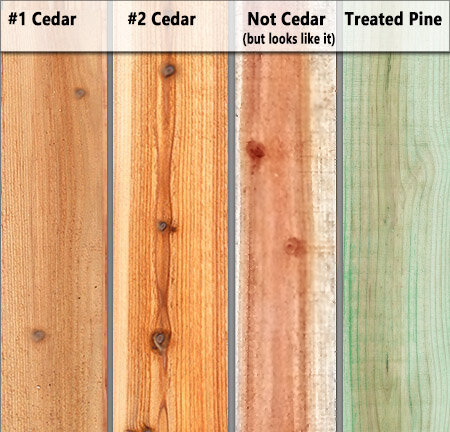
Projects that last
Quality Materials
HARDWARE
Whether we are installing a new gate, a fence with latches or putting together a pergola, we use high-quality hardware. This includes the smallest to largest of details such as latches, knobs, top caps, wrought iron fencing, etc. We ensure that our hardware is rust-resistant and will safely stand the test of time.
CRAFTSMANSHIP
In this North Texas environment, it’s important to invest in high quality building materials. Shep’s chooses materials that will resist extreme weather conditions like our Texas summer heat. Our premium wood is also insect and mildew resistant. Our crew will ensure a quality result that you can enjoy for years to come.
Quality Cedar Fences
Don’t get stuck with an inferior fence! Many companies will use short cuts to save money on your project.
Shep’s guarantees quality, long-lasting cedar on all your projects.
Cedar is ideal for building outdoor structures because of its attractive properties, resilience and resistance to harsh weather. It can stand up against the Texas sun!
There are many types of cedar (and others posing to be cedar), that do not possess the same qualities that make it ideal for outdoor use. Making sure that the right type of cedar is being installed will make a huge difference in the quality, look, and overall longevity of your fence.
At Shep’s, we ONLY use Western Red Cedar for our cedar fences, arbors and pergolas. It is a light-weight wood which causes less stress on posts and the framework of the fence. Western Red Cedar is naturally more water repellent which allows it to remain flat, mildew resistant and stable throughout the years. Using this type of wood will mean a better performing long-lasting fence with less repairs needed over the course of its life. Because it lasts longer and has a self-sustaining tree growth pattern, Western Red Cedar is also a better choice for the environment.
When purchasing a fence or building a pergola, it’s important to know what to look for in order to be sure that you are getting a quality cedar fence that will last. Some fence companies will charge you a higher price for #1 Grade Western Red Cedar, but will install #2 Grade Western Red Cedar instead, or worse, a type of wood that is not Western Red Cedar, in order to make a higher profit while hoping that you won’t be able to tell the difference.
How Can You Tell the Difference Between #1 Grade and #2 Grade Western Red Cedar?
Wood is graded for clearness and amount of defects after it is manufactured.
Clear cedar is a higher grade than #1 and comes from the heart (center) of the tree and has no knots and few blemishes. Clear cedar is not commonly used for building fences because of the much higher cost. Cedar that is graded #1 comes from closer to the heart of the tree than #2, and has fewer and smaller knots. The knots that it has are “quality knots”, meaning that they are less likely to fall out and become holes in your fence. There will be fewer blemishes and fewer variations in color with #1 grade cedar. #2 grade cedar will have many small knots and also large knots and blemishes. No matter what type of fence you have installed, you should expect to see minor imperfections and blemishes which will not affect the quality of the fence. However, if you pay for a #1 grade cedar fence, it should NOT look like it has a bad case of chicken pox!
Another way to tell the difference between #1 and #2 cedar is by the staining options available. Most fence suppliers in North Texas do not offer Pre-Stained #1 grade Western Red Cedar pickets. If you choose the Pre-Stained option, you are more than likely going to get a #2 grade cedar, unless that fence company has a staining facility where they stain the pickets themselves. If you are told that you are getting #1 grade Western Red Cedar Pre-Stained, make sure you inspect the pickets closely when they arrive.
Other Types of Cedar
Chinese Cedar- Used by many fence companies because of its lower cost, Chinese Cedar is not actually cedar, it is a fir. Its ability to resist decay and weathering is inferior to Western Red Cedar making it less suitable for fences and other outdoor structures. You can usually identify a Chinese Cedar Picket by the thickness of the board. When referring to boards, dimensions are approximations, however a 1 x 4 Western Red Cedar board is typically closer to a true 1″ thickness, while Chinese Cedar is closer to 3/4″ thick.
Japanese Cedar- A newer product on the market in the US that shows promise as being a quality, lower cost alternative to Western Red Cedar. However, the pickets are thinner and less sturdy than Western Red Cedar, and have a tendency to split or break during installation. If the fence company that you choose is using Japanese Cedar rather than Western Red Cedar, you should not be expected to pay the same price for the fence as you would for Western Red Cedar.
Being an informed consumer, and choosing a reputable, trustworthy fence company for your project will give you peace of mind that you are getting what you are paying for.

